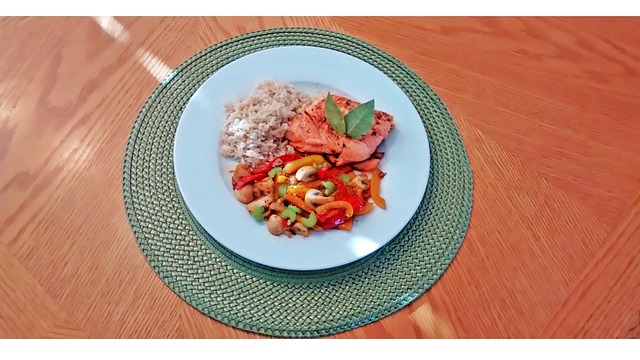Why the Mediterranean Diet Still Leads the Pack
The Mediterranean diet isn’t trendy—it’s proven. Decades of peer-reviewed studies link it to longer life, better heart health, and reduced chronic disease risk. It’s not a fad built on restriction or gimmicks. It’s what people in places like Greece, Italy, and parts of Spain have been eating for generations—and the science keeps backing them up.
This way of eating consistently holds a top spot on global diet rankings, and not just because it’s healthy. People actually stick with it. Why? It doesn’t ask you to cut out entire food groups or count every calorie. Instead, it focuses on real, whole foods with strong cultural roots: vegetables, whole grains, olive oil, legumes, fish, and the occasional glass of wine.
What makes the Mediterranean diet sustainable is its flexibility. Whether you’re cooking for one, feeding a family, or adapting to a tight budget, the diet bends without breaking. With bold flavors, minimal rules, and lasting health benefits, it’s no wonder this eating style keeps making headlines—it works.
Core Health Benefits
The Mediterranean diet isn’t a fad—it’s a science-backed approach with clear upsides. First and foremost, it supports heart health. The focus on healthy fats like olive oil, plus whole grains, veggies, and fish, naturally lowers LDL cholesterol (the kind you don’t want hanging around). This means a lower risk of heart disease without cutting corners or flavor.
It’s also a powerful anti-inflammatory. Ingredients like leafy greens, berries, and fatty fish feed the brain in ways ultra-processed foods can’t touch. Regular intake has been tied to sharper focus, reduced cognitive decline, and even a lower chance of developing Alzheimer’s.
Multiple studies also show a reduced risk of Type 2 diabetes and certain cancers. That’s thanks to a steady supply of antioxidants, fiber, and slow-burning carbs that don’t spike your blood sugar.
And yes, it helps with weight—without turning meals into math problems. By prioritizing satisfaction over restriction, the Mediterranean diet helps people eat well and stay consistent. No starvation, no gimmicks—just food that works.
Plant-Based Foundation
At the heart of the Mediterranean diet is a strong emphasis on plant-based foods. These provide the bulk of daily nutrition and form the colorful, nutrient-rich base of every meal.
Key Elements:
- Fruits and Vegetables
These are the stars of the Mediterranean table. High in fiber, antioxidants, and essential vitamins, aim to include a rainbow of produce daily to support overall health and digestion.
- Legumes
Lentils, chickpeas, black beans, and other legumes are excellent sources of plant-based protein and fiber. They help improve satiety and support a healthy gut microbiome.
- Whole Grains
Choose complex carbohydrates like quinoa, barley, farro, bulgur, and whole wheat pasta or bread. These grains provide steady energy and are less processed than refined carbs.
Healthy Fats
Unlike low-fat or fad diets, the Mediterranean approach embraces fat—but the healthy kind, primarily from plants.
Healthy Fat Sources:
- Olive Oil
Extra-virgin olive oil is the foundation fat in this diet. Rich in monounsaturated fats and antioxidants, it’s used generously in cooking and as a base for salads or dips.
- Nuts and Seeds
Almonds, walnuts, pistachios, chia, and flaxseeds add flavor, crunch, and a powerful nutrient punch. A small handful daily can support heart health.
- Avocados
While not traditional to coastal Mediterranean regions, avocados can be included for variety—offering fiber, potassium, and heart-healthy fat.
Moderate Animal Products
While plant-based foods dominate, the diet allows for moderate animal products, chosen for nutritional value over volume.
Smart Protein Choices:
- Fish and Seafood
Rich in omega-3 fatty acids, fish like salmon, sardines, and mackerel are consumed 2–3 times per week. Shellfish like shrimp and mussels are also welcome, depending on regional availability.
- Poultry and Dairy
In moderation, lean poultry (grilled or roasted), Greek yogurt, and cheeses like feta or Parmesan are typical. These add variety without overwhelming the plant base.
- Eggs
Enjoy up to a few times per week, depending on nutritional needs and personal preference. Eggs are valued for their protein and versatility.
Occasional Red Meat & Sweets
In the Mediterranean diet, less truly is more when it comes to red meat and sugary treats.
Occasional Indulgences:
- Red Meat
Consumed only occasionally—such as once a week or less—red meat is not forbidden but carefully limited. Opt for lean cuts when included.
- Sweets and Processed Foods
Reserved for special occasions, processed snacks and sugary desserts are enjoyed sparingly. Instead, fresh fruit or a drizzle of honey on yogurt often serves as a satisfying sweet finish.
Lifestyle Habits That Pull It All Together
The Mediterranean lifestyle isn’t just about what’s on your plate—it’s about how you live around it. Meals here are rarely rushed. They’re social moments, often enjoyed with family or friends, with conversation flowing as freely as the olive oil. Eating slowly isn’t some mindfulness gimmick—it’s just normal. And it makes a difference.
Then there’s movement. Nobody’s sprinting through HIIT workouts or logging 10,000 steps for the brag. It’s about built-in activity: walking to the market, tending to the garden, taking the long way home. Nothing heroic. Just steady, natural motion that adds up over time.
Finally, this way of eating doesn’t revolve around calorie math. People aren’t hunched over apps tracking macros. Instead, they focus on food that’s fresh, full of color, and closer to the earth. Quality beats quantity. Simple wins. And that’s kind of the point.
Getting Started
Shifting to a Mediterranean diet doesn’t mean turning your kitchen upside down overnight. Start simple. Swap out butter for olive oil. Toss an extra handful of spinach into your pasta. Add beans to soups or grain bowls. Let vegetables fill more of your plate, while meat takes a supporting role.
As you get comfortable, begin planning meals around plant-based staples and seafood. A grain-and-veggie bowl with salmon or grilled shrimp gets you a lot of the way there. Keeping frozen vegetables and pantry grains on hand helps you improvise without hitting the drive-thru.
Meal prep isn’t just for the hyper-disciplined. It can be as basic as prepping a pot of quinoa on Sunday or chopping extra veggies to use later in the week. The little stuff adds up, making it easier to eat well without overthinking every meal.
Want a smarter way to organize your meals? Check out How to Create a Healthy Meal Plan for the Week.
Final Take
The Mediterranean diet isn’t about cutting everything out or tracking every bite. It’s about a pattern—eating real food, moving your body, and sharing meals without guilt. That means slow dinners with people you care about. Olive oil instead of butter, sure. Grilled fish instead of fried chicken, maybe. But it’s less about rules, more about rhythm.
This way of eating sticks because it isn’t extreme. It doesn’t demand you flip your life overnight. You start with what you have—a bowl of lentils, a walk after dinner, lunch outside instead of in front of a screen. And then you build. Not for a month, but for good.
The diet works because it lives beyond the plate. It runs on consistency, not perfection. You don’t need to be a chef or nutritionist. You just need to care enough to choose fresh, simple, unprocessed foods most of the time—and enjoy the process.
Big picture: aim for better, not perfect. That’s how real change sticks.


 As co-founder of FoodHypeSaga. Zyphara merges her creative energy with a passion for food culture and digital innovation. She drives the platform’s vision forward while writing about food trends that shape modern culinary conversations.
As co-founder of FoodHypeSaga. Zyphara merges her creative energy with a passion for food culture and digital innovation. She drives the platform’s vision forward while writing about food trends that shape modern culinary conversations.

